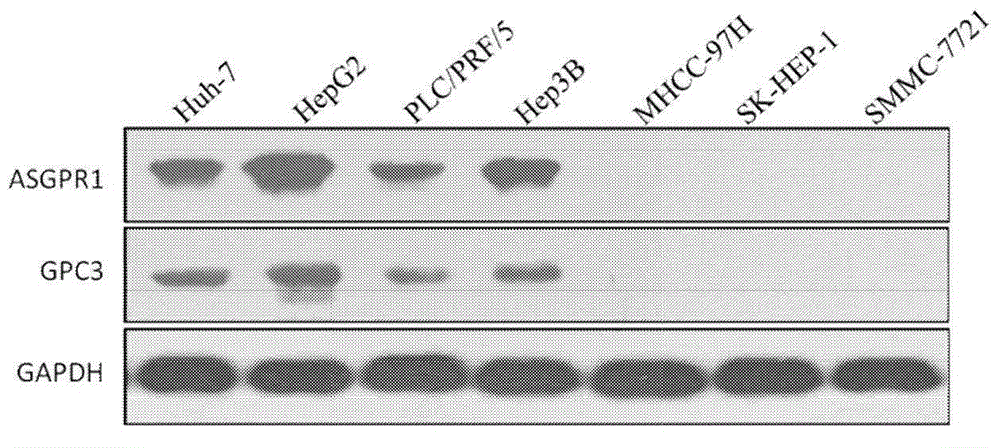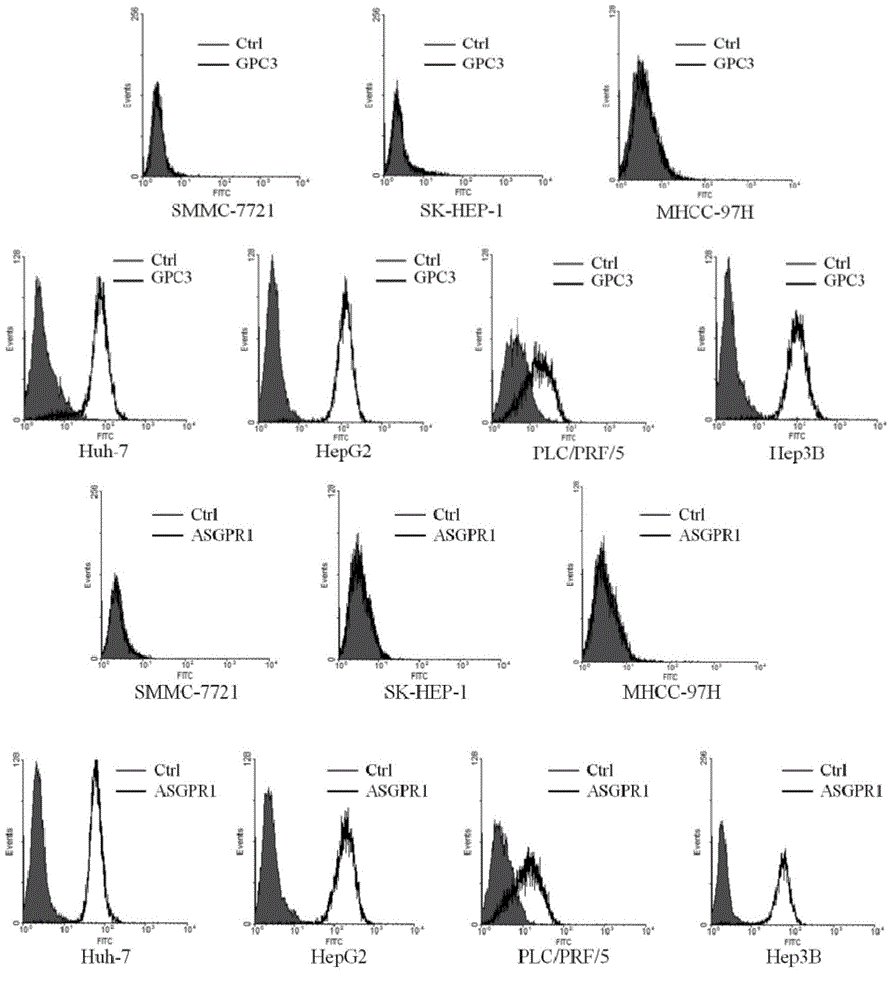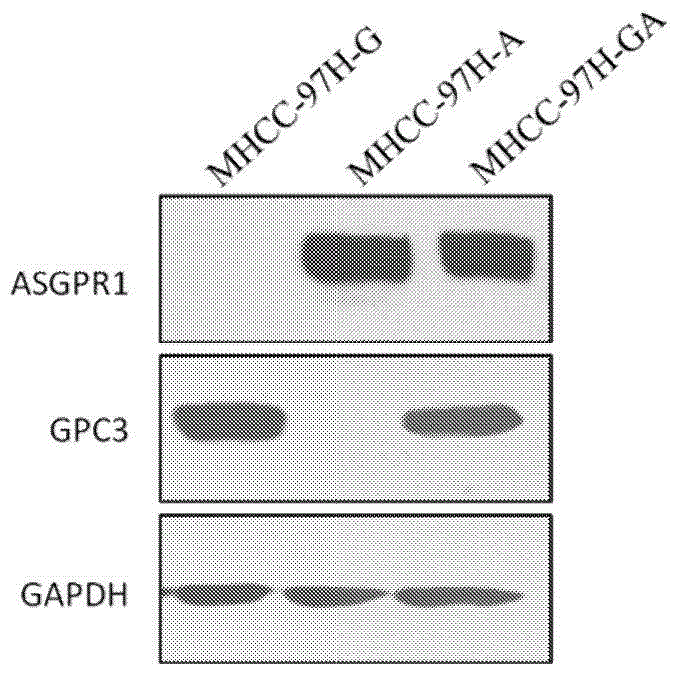Dual-targeting genetically modified immunologic effector cell aiming at GPC3 (Glypican-3) and ASGPR1 (asialoglycoprotein receptor 1) and applications of dual-targeting genetically modified immunologic effector cell
一种免疫效应细胞、双靶向的技术,应用在血液/免疫系统细胞、用于靶向特定细胞融合、抗动物/人类的免疫球蛋白等方向,能够解决没有ASGPR1、没有CAR免疫效应细胞联合应用等问题
- Summary
- Abstract
- Description
- Claims
- Application Information
AI Technical Summary
Problems solved by technology
Method used
Image
Examples
preparation example Construction
[0047] Conventional methods for preparing "chimeric antigen receptor immune effector cells" are known to those skilled in the art, including allowing them to express an extracellular antigen (such as a tumor-associated antigen) binding region; and intracellular costimulatory cell molecule intracellular structure Domains, such as one or more of CD28 (preferably including CD28a, CD28b), CD137, CD27, CD3ζ (preferably CD3ζ intracellular domain), CD8, CD19, CD134, CD20, FcRγ. Through their combination with corresponding ligands, the second signal of immune effector cells is activated, the proliferation ability of immune cells and the secretion function of cytokines are enhanced, and the survival time of activated immune cells is prolonged.
[0048] In the present invention, unless otherwise specified, the tumor refers to a tumor that is both positive for GPC3 and ASGPR1, for example, the tumor includes: liver cancer.
[0049] The present inventors unexpectedly found in the research...
Embodiment 1
[0066] Example 1, Detection of the expression levels of ASGPR1 and GPC3 in various liver cancer cell lines and the establishment of stably expressed liver cancer cell lines
[0067] 1. Detection of expression levels of ASGPR1 and GPC3 in various liver cancer cell lines
[0068] The inventors first detected the expression of ASGPR1 and GPC3 in various liver cancer cell lines.
[0069]Western-blot detection method: HepG2, Huh-7, Hep3B, PLC / PRF / 5, MHCC-97H, SK-HEP-1 and SMMC-7721 cells in good growth state were washed twice with D-PBS respectively , add T-REP tissue cell lysate, lyse on ice for 1h, centrifuge at 12000rpm for 10min, and collect the supernatant. The BCA method was used to quantify according to the instructions of the BCA assay kit, and the absorbance at a wavelength of 570 nm was detected by an ultraviolet spectrophotometer. Afterwards, the samples collected above were electrophoresed by 12% SDS-PAGE, and 20 μg of total protein were respectively loaded. After SD...
Embodiment 2
[0086] Embodiment 2, GCART cell (or claiming GZT cell), the establishment of ACCRT cell (or claiming 28BBT cell) and GZ+28BBT cell
[0087] 1. Construction of pWPT-eGFP-F2A-GPC3-CD3ζ
[0088] The amplification of the scFv (GPC3) sequence uses the single-chain bifunctional antibody nucleotide GPC3 / CD3 as a template. For the sequence of the template, refer to SEQ ID NO: 9 in Chinese patent application 201210480326.x. The primer pair used in the amplification is upstream primer 5'-gatgttgtgatgactcagtctc-3' (SEQ ID NO: 9) and downstream primer 5'-gcgctggcgtcgtggttgaggagacggtgaccag-3' (SEQ ID NO: 10) for the amplification of scFv (GPC3) (SEQ ID NO: 11, It encodes SEQIDNO: 12); the size of the target amplified band is 746bp. The PCR amplification conditions were pre-denaturation: 94°C, 4min; denaturation: 94°C, 40s; annealing: 58°C, 40s; extension: 68°C, 40s; 30 cycles, and then a total extension of 68°C, 10min. The PCR amplified bands were confirmed by agarose gel electrophoresis...
PUM
 Login to View More
Login to View More Abstract
Description
Claims
Application Information
 Login to View More
Login to View More - R&D
- Intellectual Property
- Life Sciences
- Materials
- Tech Scout
- Unparalleled Data Quality
- Higher Quality Content
- 60% Fewer Hallucinations
Browse by: Latest US Patents, China's latest patents, Technical Efficacy Thesaurus, Application Domain, Technology Topic, Popular Technical Reports.
© 2025 PatSnap. All rights reserved.Legal|Privacy policy|Modern Slavery Act Transparency Statement|Sitemap|About US| Contact US: help@patsnap.com



